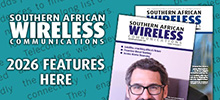31 March 2023
The GSMA has laid out what it calls the mobile industry’s vision of how to maximise the benefits of mobile spectrum for billions of people worldwide ahead of spectrum allocation deliberations at the crucial ITU World Radio Communication Conference (WRC-23) in November and December.
The association has also released a new review of the socio-economic benefits of low-band spectrum, which complements previously released assessments for mid and high-band spectrum.
The GSMA argues that the speed and quality of mobile services are directly linked to spectrum, and decisions taken at WRC-23 have the potential to deliver affordable 5G across the world.
A paper outlining its vision explains how governments and regulators can use WRC-23 to develop thriving and competitive communications markets and help to ensure that no one is left behind in a digital age.
It suggests that increasing capacity for mobile at WRC-23 will lead to better services delivered from less costly, more sustainable networks. It also argues that more low-band spectrum can deliver broad and affordable connectivity, building bridges towards digital inclusion. In addition, it points out that mid-band expansion can drive city-wide 5G.
The GSMA’s vision paper is accompanied by a report, ‘Socio-Economic Benefits of 5G – The importance of low-band spectrum,’ which examines how low-band spectrum is a driver of digital equality, reducing the gap between urban and rural areas and delivering not only affordable connectivity but also a lot of economic value – through massive IoT (mIoT) in particular but also through enhanced mobile broadband (eMBB) and fixed wireless access (FWA).
It argues that without sufficient low-band spectrum, the digital divide is likely to widen, and those living in rural areas will be excluded from the latest digital technologies.
The timing of these messages is no coincidence. Future allocations of spectrum at national level are guided by decisions made at the ITU’s quadrennial WRC conference and many regional and global interest groups – representing satellite, broadcasting and Wi-Fi as well as mobile – will no doubt want to have their say ahead of the event.







